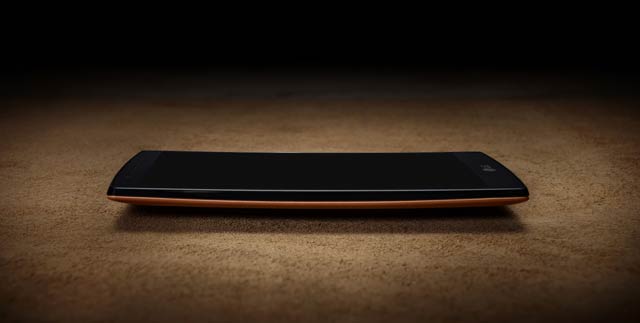
The LG G3 and the G2 before it were two of our favourite smartphone models of recent years. In those phones LG, the smaller Korean rival to consumer electronics behemoth Samsung, produced devices that could compare with the best Android-powered flagships in the world — including Samsung’s Galaxy S line-up.
The G3, in particular, with its quad-HD display and tiny bezel, meant it regularly made the top-5 lists of technology magazines and websites throughout 2014.
So, there is an enormous weight of expectation on the shoulders of the new G4 before it even goes on sale later this month (in South Africa). Does it live up to those lofty expectations? Has it done enough to ensure it stays near the top of the hot gadgets lists?
TechCentral’s short answer: it does and it has, and then some — but with one caveat, which we’ll get to later in this review.
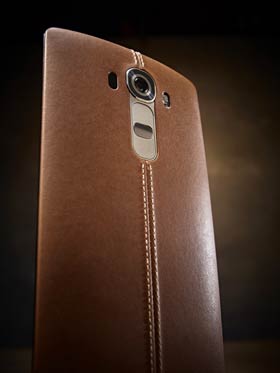
First, it’s probably important to describe what the G4 looks like, because, from a design perspective, we think LG has hit a home run with this phone.
Building on the design ethos of the G3 — and why not, given how well it was received? — the G4 has a gorgeous and very bright, 5,5-inch quad-HD display encased in a super-thin bezel. The rear cover is removable (which means a removable battery — yay!) and is available in both a plastic version and in a range of leather covers in different colours — and unless cowhide offends you, you’ll want to get the latter. We’re quite partial to the brown leather option (pictured on the right).
In hand, the 155g phone feels smaller than other 5,5-inch smartphones thanks to that thin bezel. If you’re moving from, say, a Samsung Galaxy S4 or S5, don’t worry too much about the increase in real estate.
As with previous LG flagships, the G4 can be woken by tapping a “knock code” on the screen when it’s asleep. This does consume a small amount of battery while in standby, but it’s a useful way of unlocking the phone quickly without first having to press the rear power button to wake it from sleep. Of course, you can switch this feature off and choose from a range of other security options to unlock the phone.
It’s the screen that really makes this phone. The quad-HD IPS LCD is super crisp thanks to the 1 440×2 560-pixel (538ppi) resolution, while colour reproduction is wonderfully accurate. And the phone’s brightness can be turned up so high, it’ll feel like it’s burning a hole in your retina. Of course, you’re not going to want to keep the brightness on maximum, not least because of the impact it will have on the battery. Fortunately, the “auto brightness” feature works well, and the additional brightness is useful when using the phone in direct sunlight.
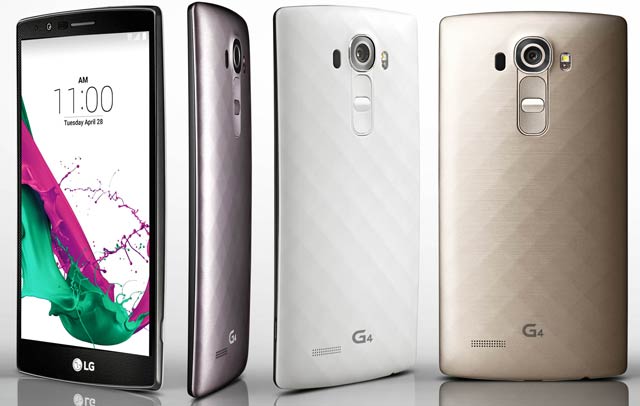
Beauty and brains
The new LG has received incremental improvements under its bonnet. It has a dual-core 1,8GHz Cortex-A57 and a quad-core 1,4GHz Cortex-A53 processor paired to an Adreno 418 graphics processor. It has 3GB of RAM, too, which is pretty standard in high-end smartphones in 2015.
There’s 32GB of flash storage — enough for most people, though this can be expanded by up to 128GB using a microSD card for those who like to carry multimedia collections — movies, for example, on their phones.
Of course, there’s everything you’d expect in the connectivity department. Wi-Fi is up to the speedy 802.11a/c variety with dual-band support. And the range of mobile data frequencies and technologies offered is enormous, right up to LTE Cat 6 at 300Mbit/s (theoretical, of course, and if you can find an operator that supports it).
The G4 ticks all the other boxes. There’s assisted GPS and Glonass support. Near-field communication is there, too. Accelerometer, gyro, proximity sensor, compass, barometer? All there.
Lights, camera, action
The camera is one area where the G4 really stands out. The 16-megapixel primary shooter, with a fast f/1.8 lens, has a wide aperture, which delivers some of the best pictures in low-light conditions we’ve seen on a smartphone.
The camera, which has laser-assisted focusing (same as on its predecessor) and a colour spectrum sensor, also pops up on-screen noticeably faster than on the G3.
Double-tapping the volume down button on the rear of the phone when it’s asleep brings up the camera, which then immediately focuses and takes a picture, all in about a second, ensuring there’s less chance of missing that crucial action shot.
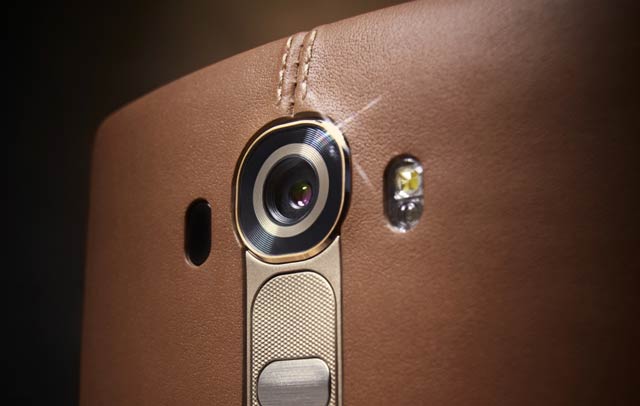
The camera comes with optical image stabilisation — now a standard in most high-end smartphones — and can shoot video at 2K resolution at 30fps or at 1080p at 60fps.
Other features include high dynamic range, or HDR, face detection technology and simultaneous video and image recording.
In short, this is one of the best smartphone cameras on the market.
As if that wasn’t enough, the front-facing camera is also excellent. Featuring an 8-megapixel sensor, it can even shoot video in full high definition at 30fps. If you make a lot of Skype video calls or take a lot of “selfies”, you will not be disappointed.
Vanilla experience
The G4 ships with Android 5.1, which is the latest version of the Google operating system. Like the G3 before it, LG has avoided tweaking the basic OS too much, and for that it gets our praise.
The fact that the OS is fairly vanilla also means LG is able to send out Android updates faster because it doesn’t have to spend months tweaking its own user interface to fit in with the Google updates. The G3 was one of the first Android smartphones to get the Lollipop treatment and we expect the same will be true of the G4 and the upcoming Android M.
The most prominent LG addition to the software is Smart Notice, a widget at the top of the main screen that uses natural language to tell you about, for example, the weather and upcoming events. “Beautiful clear skies in the afternoon,” was a common one that popped up during our time with the device. If you find it annoying — some might — it’s easy to drag it to the trash and replace it with a widget of your choice (or not).
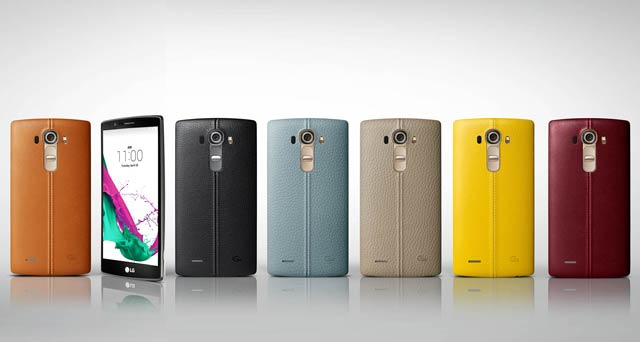
The battery
If there’s one area where the G4 deserves criticism, it’s over its battery life. Unlike other manufacturers, which have made great advances in this area in recent years (we’re nodding approvingly in your direction, Sony), the LG G4 doesn’t get through a day of heavy use.
There are ways to reduce consumption — turning down the brightness is probably the most important, though the phone allows you to see which apps are eating through the most battery and gives you the option to stop running them in the background.
There’s no doubt that the G4’s quad-HD screen is a beautiful sight to behold, but we also wonder what impact it really has on battery life and whether LG would have been better off putting a 1080p display in this model. After moving to quad HD in the G3, it probably felt it didn’t have the option of going back.
On the plus side, the G4 charges noticeably quickly. And, of course, the battery is user-replaceable, so carrying a spare is an option.
In summary
Despite our gripe about the battery life, the LG G4 is a candidate for best smartphone of 2015, alongside devices such as the Samsung Galaxy S6 edge and the HTC One M9.
Its camera is superb and its 5,5-inch screen is a pleasure to use. If you’re in the market for an Android flagship, we think the G4 should be high on your list of options. — © 2015 NewsCentral Media
- Expect to pay between R8 500 and R10 000 for the LG G4. The phone will also be available on contract options




